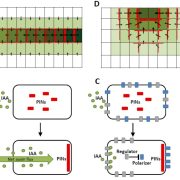
Review: Computer models of cell polarity establishment in plants
Plant Science Research WeeklyIt’s pretty obvious that plants are not simply balls of cells. Their shapes and patterns are determined in large part through processes that cause cells to grow and divide asymmetrically, through the establishment of cell polarity. When I set out to read this review I was a bit nervous, expecting to…
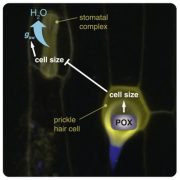
Regulation of hair cell and stomatal size by a hair-cell specific peroxidase in Brachypodium distachyon
Plant Science Research WeeklyMature grass leaves contain two specialized types of epidermal cells: stomata and epidermal hairs (trichomes). Stomatal pores are crucial for CO2 uptake and water conservation, while epidermal hairs contribute to water regulation and provide protection against UV-B light. If stomatal identity is not…
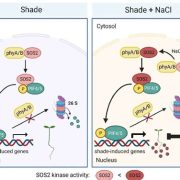
Precise integration of large DNA sequences in plant genomes using PrimeRoot editors
Plant Science Research WeeklyAlthough CRISPR/Cas9 tools have provided new opportunities for genome editing, using these systems to introduce large pieces of DNA has been challenging. A new genome editing technique, “PrimeRoot” (Prime editing-mediated Recombination Of Opportune Targets), was introduced by Sun et al. and shown…
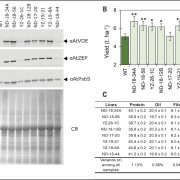
Improved soybean photosynthesis and yield by accelerating recovery from photoprotection
Plant Science Research WeeklyEnhancing crop yield for future food supplies involves increasing photosynthetic efficiency, which can be achieved by improving photoprotection through non-photochemical quenching (NPQ). NPQ enables leaves to dissipate excess absorbed light energy as heat, minimizing the negative effects of photodamage.…

Shade finds a salty connection
Plant Science Research WeeklyLight acts as a crucial signal for plant growth and development and is perceived by several types of photoreceptors including phytochromes (phys). Sun-loving plants often exhibit shade avoidance syndrome (SAS), like longer hypocotyl, lesser branching, and earlier flowering to outcompete their neighbors…
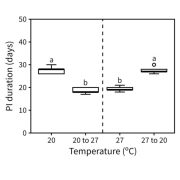
Photo-thermally controlled transcriptional regulation of FT drives the arrest of flowering time in Arabidopsis
Plant Science Research WeeklyLight and temperature are important external signals required by plants for flower initiation. These external signals along with some internal cues (plant age, gibberellins, etc.) are established factors for floral initiation, but the factors required for end-of-flowering time are not yet established.…
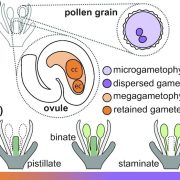
Re-imagining reproduction: The Queer possibilities of plants
Plant Science Research WeeklyMale - female, egg - sperm: how did these animal-centric terms come to be applied to plants? This question is addressed in this interesting essay by Subramaniam and Bartlett. As they observe, the language we use to talk about plant reproduction is largely rooted in the language of animal reproduction,…

Plant Science Research Weekly: May 12, 2023
WWR Full PostReview: Climate change impacts on plant pathogens, food security, and paths forward
Much of what is written about the impacts of climate change on food production is focused on the abiotic stresses that plants will experience, but biotic stresses will be equally impactful, as discussed in this fine…

Maria Sorkin: Plant Physiology First Author
Plant Physiology: Author Profiles
Maria Sorkin, first author of "COLD REGULATED GENE 27 and 28 Antagonize the Transcriptional Activity of the RVE8/LNK1/LNK2 Circadian Complex"
Current Position: Organism Engineer at Ginkgo Bioworks
Education: BA-Kenyon College, PhD-Washington University in St. Louis
Non-scientific Interests:…

